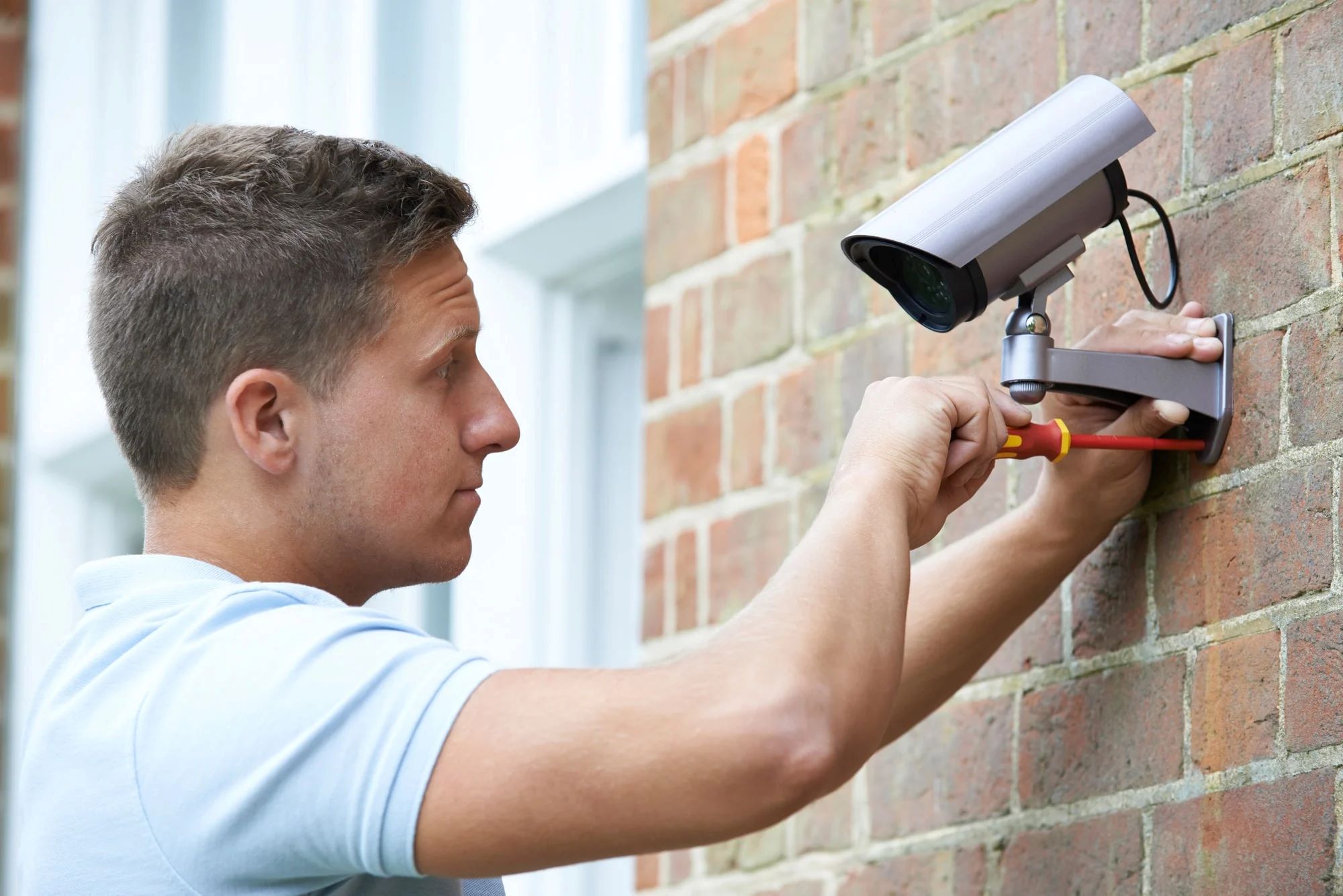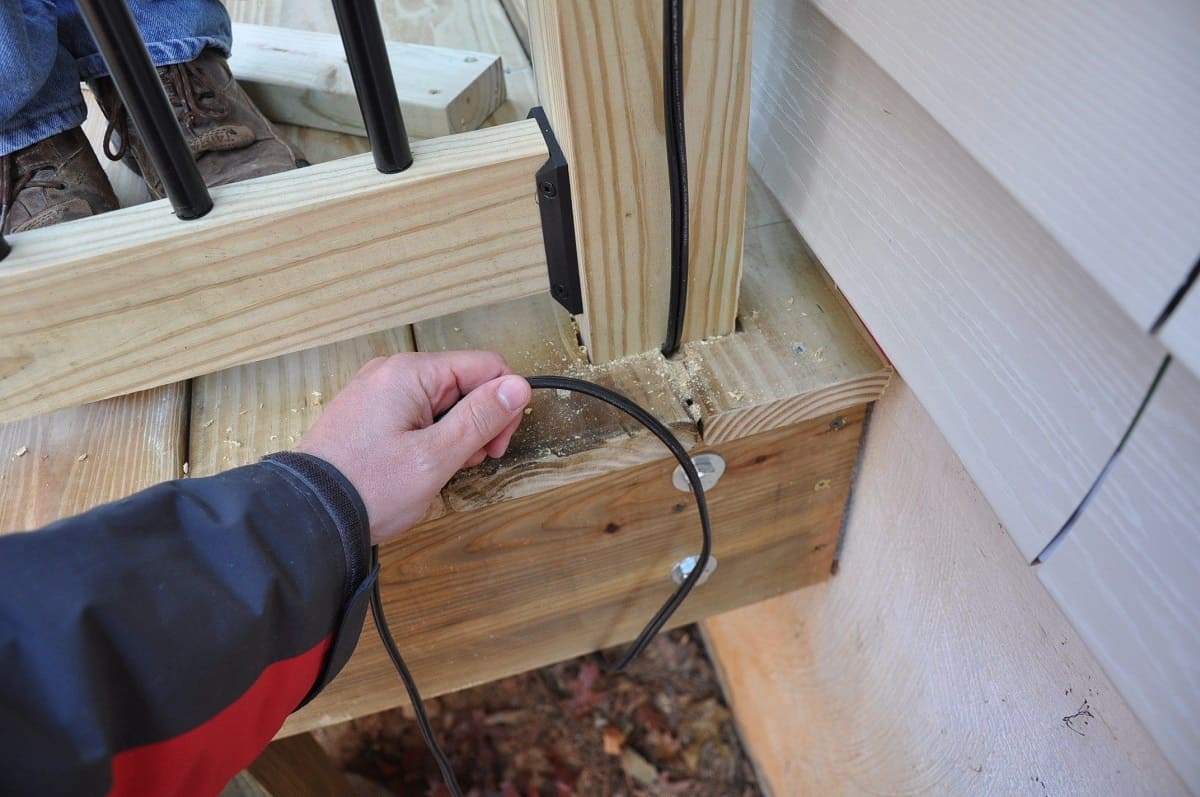Home>Furniture & Design>Outdoor Furniture>How To Hide Outdoor Cables


Outdoor Furniture
How To Hide Outdoor Cables
Published: January 12, 2024
Learn how to hide outdoor cables and maintain the aesthetic appeal of your outdoor furniture and design. Discover effective tips and tricks for concealing unsightly cables.
(Many of the links in this article redirect to a specific reviewed product. Your purchase of these products through affiliate links helps to generate commission for Storables.com, at no extra cost. Learn more)
Introduction
When creating a beautiful outdoor space, the last thing you want to see are unsightly cables snaking across your yard or patio. However, with the increasing number of devices and technology used outdoors, such as lighting, speakers, and outdoor entertainment systems, the need for outdoor cables is becoming more prevalent. The challenge then becomes how to hide these necessary but aesthetically unappealing cables.
In this comprehensive guide, we will explore various methods to effectively conceal outdoor cables, ensuring that your outdoor living area remains visually pleasing while maintaining functionality. Whether you're planning a backyard transformation or seeking to enhance your current outdoor setup, these strategies will help you achieve a seamless and polished look. From burying cables to utilizing innovative outdoor cable management systems, we'll cover everything you need to know to keep your outdoor space organized and visually appealing. Let's dive into the details and discover how to effectively hide outdoor cables while elevating the overall ambiance of your outdoor oasis.
Key Takeaways:
- Planning the route and burying outdoor cables can keep your outdoor space tidy and safe, ensuring a seamless integration with nature while minimizing visual clutter and hazards.
- Using landscaping, cable covers, and management systems offers creative and practical ways to hide outdoor cables, enhancing the beauty and functionality of your outdoor oasis.
Read more: How To Hide Outdoor Speakers
Step 1: Determine the Best Route for the Cables
Before concealing outdoor cables, it’s crucial to plan the optimal route for them. Careful consideration of the layout and design of your outdoor space will help determine the most effective path for your cables, minimizing the need for extensive concealment measures.
Start by identifying the areas where the cables will be most discreetly routed. Consider natural features such as shrubbery, trees, or existing landscaping elements that can provide natural coverage for the cables. Additionally, take into account the locations of power sources and the specific requirements of the devices or fixtures the cables will be connected to.
Mapping out the cable route will also involve assessing potential obstacles and hazards, such as high-traffic areas, water features, or areas prone to landscaping maintenance. By carefully planning the cable route, you can anticipate and address any potential challenges that may arise during the installation and concealment process.
Furthermore, consider the future accessibility of the cables for maintenance or potential additions to your outdoor setup. Planning for easy access to the cables will save time and effort in the long run, should any adjustments or repairs be necessary.
By taking the time to determine the best route for your outdoor cables, you can streamline the concealment process and ensure that the cables are strategically positioned to minimize their visual impact on your outdoor space.
Step 2: Burying the Cables
Burying outdoor cables is a highly effective way to conceal them while ensuring a clean and uncluttered outdoor environment. This method not only hides the cables from view but also provides protection against potential damage and wear caused by exposure to the elements.
Before burying the cables, it’s essential to adhere to local building codes and regulations regarding the depth and installation of buried cables. This may involve obtaining permits or consulting with a professional to ensure compliance with safety standards.
When burying the cables, use a trenching shovel or a trenching machine to create a narrow trench along the planned route. The depth of the trench will depend on the type of cables and local regulations, but a general guideline is to bury the cables at least 18 inches below the surface to prevent accidental exposure.
After laying the cables in the trench, backfill the area with soil and ensure that the cables are adequately covered. Tamp down the soil to secure the cables in place and prevent shifting or exposure over time.
It’s important to note that when burying cables, it’s best to use cables specifically designed for underground installation. These cables are constructed with durable materials that can withstand the conditions of being buried, such as moisture and soil compression, ensuring long-term reliability and safety.
By burying outdoor cables, you can achieve a seamless and unobtrusive cable concealment solution that enhances the overall aesthetics of your outdoor space while safeguarding the cables from potential damage and hazards.
Step 3: Concealing the Cables with Landscaping
Integrating outdoor cables into your landscaping design offers a creative and visually appealing approach to concealment. By strategically incorporating natural elements and landscaping features, you can effectively camouflage the cables while enhancing the overall beauty of your outdoor space.
One approach to concealing outdoor cables with landscaping is to utilize existing or newly planted vegetation. Tall grasses, shrubs, and bushes can be strategically positioned to create a natural barrier that hides the cables from view. When selecting plants for this purpose, consider their growth patterns and ensure that they will provide sufficient coverage without obstructing access to the cables for maintenance or repairs.
Another landscaping strategy involves incorporating decorative elements such as rocks, mulch, or decorative pavers to create a visually appealing pathway that conceals the cables. These elements can be arranged along the cable route to blend seamlessly with the surrounding environment while effectively hiding the cables from sight.
For a more artistic and personalized approach, consider using outdoor art installations or decorative structures to conceal the cables. Trellises, decorative screens, or artistic sculptures can be strategically placed to not only hide the cables but also add a touch of creativity and sophistication to your outdoor space.
When concealing cables with landscaping, it’s important to consider the long-term maintenance and accessibility of the cables. Ensure that the chosen landscaping elements do not hinder the ability to access the cables for maintenance or repairs, and plan for easy removal or adjustment of the concealment features when necessary.
By integrating outdoor cables into your landscaping design, you can transform them from functional necessities into seamless elements that contribute to the overall beauty and cohesiveness of your outdoor environment.
Use cable concealer or outdoor cable covers to hide outdoor cables. These products are designed to blend in with outdoor surroundings and protect cables from the elements.
Step 4: Using Cable Covers and Protectors
Employing cable covers and protectors presents a practical and versatile solution for concealing outdoor cables while safeguarding them from potential damage and wear. These specially designed accessories offer a range of options for seamlessly integrating cables into your outdoor space while maintaining a clean and organized appearance.
Cable covers, available in various lengths and designs, are ideal for concealing exposed cables along pathways, outdoor entertainment areas, or any visible sections of the cable route. These covers are often constructed from durable materials such as PVC or rubber, providing both protection and a discreet appearance. Choose covers that blend with the surrounding environment and can be easily installed and removed for cable maintenance.
For areas where cables are vulnerable to impact or foot traffic, cable protectors offer an added layer of defense. These protectors are designed to encase and shield cables from potential damage, such as being stepped on or run over by vehicles. Additionally, some cable protectors feature a low-profile design, minimizing their visual impact while effectively safeguarding the cables.
When using cable covers and protectors, it’s essential to select options that are weather-resistant and suitable for outdoor use. Ensure that the covers and protectors are capable of withstanding exposure to sunlight, moisture, and fluctuating temperatures, maintaining their functionality and appearance over time.
By incorporating cable covers and protectors into your outdoor cable concealment strategy, you can effectively mitigate the visual impact of exposed cables while ensuring their long-term durability and performance in outdoor environments.
Read more: How To Hide An Outdoor Camera
Step 5: Using Outdoor Cable Management Systems
Implementing outdoor cable management systems offers a comprehensive and organized approach to concealing and organizing cables in your outdoor space. These systems are designed to streamline cable concealment while providing a structured and efficient method for managing multiple cables and connections.
One of the key advantages of outdoor cable management systems is their ability to consolidate and conceal multiple cables within a single, integrated solution. Whether you have a complex outdoor entertainment setup, landscape lighting network, or a combination of outdoor devices, these systems offer a unified approach to organizing and concealing the associated cables.
Outdoor cable management systems often feature weather-resistant enclosures or channels that can be discreetly installed along designated cable routes. These enclosures are designed to protect the cables from environmental elements while maintaining a tidy and unobtrusive appearance. Additionally, some systems may include customizable fittings and adapters to accommodate various cable types and connection configurations.
When selecting an outdoor cable management system, consider the scalability and flexibility it offers to accommodate future expansion or modifications to your outdoor setup. Look for systems that allow for easy access to the cables for maintenance and adjustments, ensuring that the concealment solution does not impede the functionality or accessibility of the cables.
Furthermore, outdoor cable management systems can contribute to the overall safety of your outdoor space by minimizing tripping hazards and preventing accidental damage to the cables. By organizing and concealing the cables within dedicated management systems, you can create a visually appealing and hazard-free environment for outdoor activities and relaxation.
By integrating outdoor cable management systems into your outdoor space, you can achieve a cohesive and organized approach to concealing and managing cables, enhancing the overall functionality and aesthetics of your outdoor environment.
Conclusion
Concealing outdoor cables is an essential aspect of creating a visually appealing and functional outdoor living space. By employing strategic methods such as burying cables, integrating them into landscaping, utilizing cable covers and protectors, and implementing outdoor cable management systems, you can effectively hide unsightly cables while maintaining the integrity and beauty of your outdoor environment.
Each of the aforementioned strategies offers unique advantages and considerations, allowing you to tailor the concealment approach to your specific outdoor layout and design preferences. Whether you prefer a seamless integration of cables into the natural landscape or a structured cable management system, there are diverse options to suit your needs.
Furthermore, as outdoor technology and entertainment systems continue to evolve, the importance of concealing and organizing outdoor cables becomes increasingly significant. By addressing this aspect of outdoor design, you can create a polished and inviting space for relaxation, entertainment, and gatherings, free from the visual clutter and hazards posed by exposed cables.
As you embark on the journey of concealing outdoor cables, consider the long-term accessibility, maintenance, and future expansion of your outdoor setup. Thoughtful planning and implementation of concealment strategies will not only enhance the aesthetics of your outdoor space but also contribute to its functionality and safety.
Ultimately, by concealing outdoor cables with creativity and practicality, you can transform your outdoor environment into a harmonious and inviting retreat, where the beauty of nature seamlessly integrates with modern amenities, creating a space for enjoyment and relaxation for years to come.
Frequently Asked Questions about How To Hide Outdoor Cables
Was this page helpful?
At Storables.com, we guarantee accurate and reliable information. Our content, validated by Expert Board Contributors, is crafted following stringent Editorial Policies. We're committed to providing you with well-researched, expert-backed insights for all your informational needs.















0 thoughts on “How To Hide Outdoor Cables”